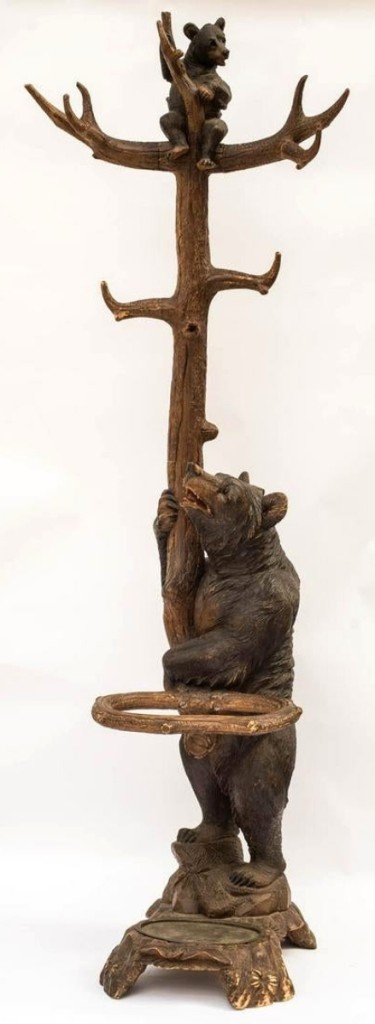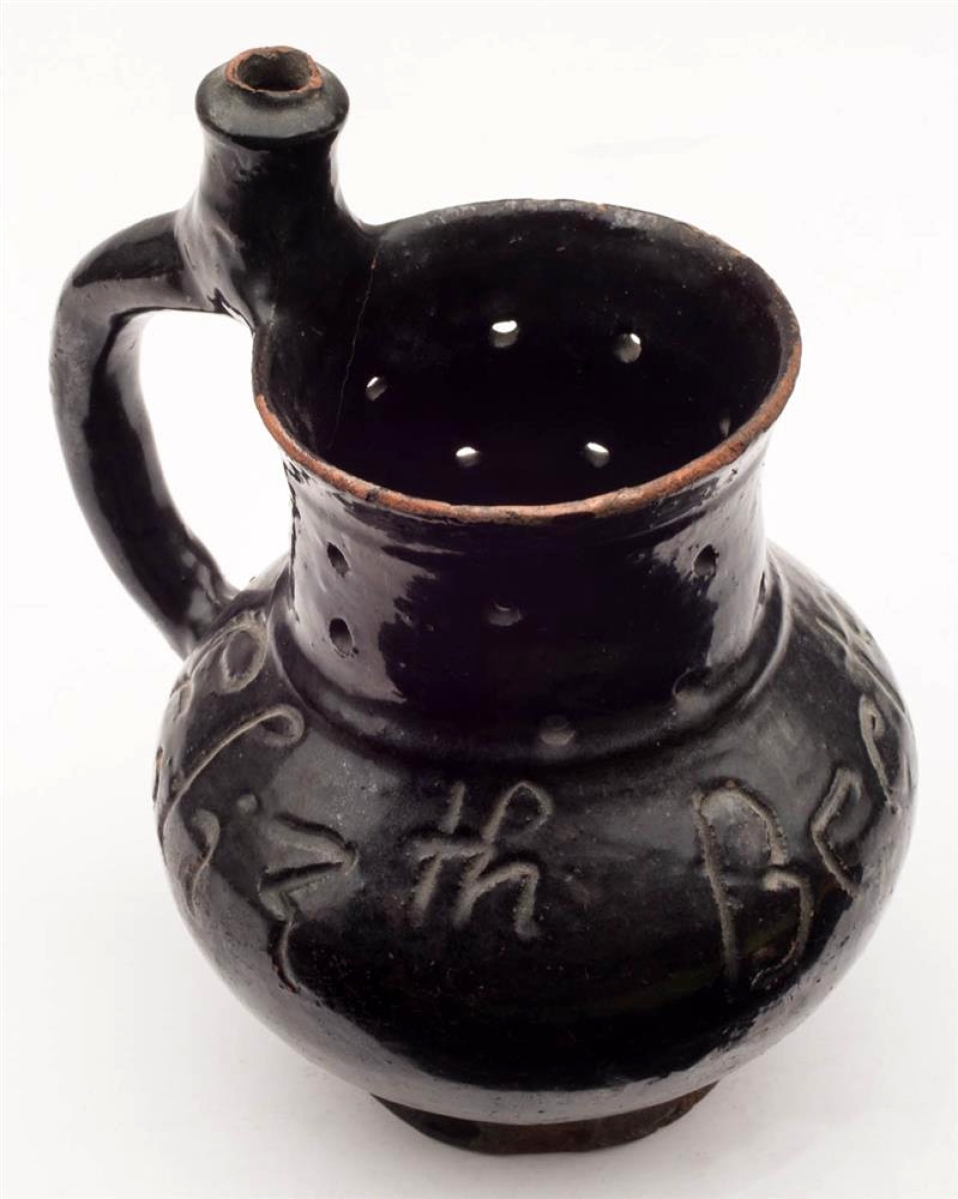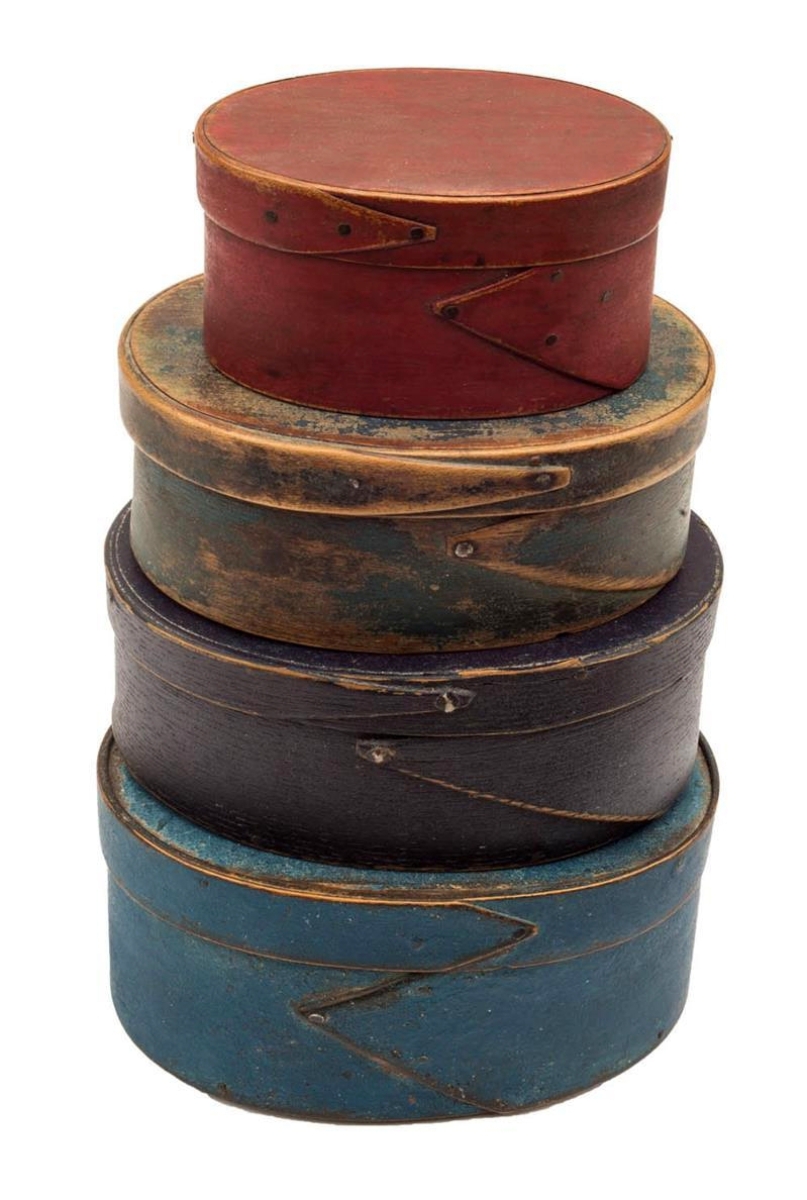Review and Onsite Photos by Rick Russack, Additional Photos Courtesy of Willis Henry Auctions
ROCKLAND, MASS. – Have you given much thought to where things at auction have come from? If you have, Willis Henry’s February 22 sale might have had some unexpected answers for that question. A substantial number of lots came from a 35-acre estate in central Massachusetts that is being turned into a marijuana farm (now that pot is legal in Massachusetts). The two highest priced lots in the sale came from a museum in Switzerland that allowed visitors to purchase items they liked. A retired New York state veterinarian that employed 40 supplied much of the Americana. Some came from one of the oldest houses in Marshfield, Mass., and more came from the normal variety of consignors.
There were Black Forest carvings, maps, paintings, trade signs, painted furniture, paint decorated boxes, redware, farm equipment salesman’s samples, whalebone items, samplers and a wide selection of the woodenware for which Henry is known. There were more than 150 people in the salesroom as the day began, and internet, phone and absentee bidding was utilized. There were so many high-quality items, it was the kind of a sale where buyers really had to spend time examining items for themselves; finishes, textures and colors really had to be seen in person. Photographs on a computer screen are sometimes not enough.
There are two museums dedicated to Black Forest carvings in Brienze, Switzerland, which was the center of the art, dating back to the mid-Nineteenth century, and carvings are still produced there in significant quantities. The two highest priced lots in this auction were examples of Black Forest carvings. When Henry was discussing with us the sources for this auction, he said, “The two large Black Forest carvings came from a museum in Switzerland dedicated to carvings from that area. The consignor said that when he visited the museum in the 1960s, he inquired where he could purchase similar carvings. He said that he was told to pick out things he liked and that he could buy them since the museum would have others carved to replace them.”
That the museum was willing to sell items would seem to be confirmed by an internet listing for a dealer (Cisco’s Gallery) specializing in carvings from the area whose website states that the gallery “purchased the collection of a large museum in Brienze.” Bringing the top price of the sale was an 83-inch-tall Black Forest umbrella stand/coat rack carved in the form of a tree with a large mother bear encouraging its cub to climb down. It sold for $7,500. Finishing at $6,563 was a 43-inch heavily carved bench supported by two large carved bears with glass eyes. The sale also included two smaller Black Forest carvings.
Rounding out the top three items in the sale, and bringing $6,250, more than 12 times the high estimate, was a salesman’s sample horse-drawn sickle bar mower, used by farmers in the Nineteenth and early Twentieth Century to cut hay fields. It was made of cast iron and brass, with original bright paint in yellow, red and black. It and another related item that might have also been a salesman’s sample or a patent model were bought by dealer/collector Butch McGrath of Scituate, Mass., who describes himself as the leading dealer in these items. The second one was a brass and walnut model of an adjustable ox yoke. It was described and pictured in an 1864 edition of Scientific American and realized $1,875.

A total of $7,500, the highest price of the day, was paid for this Black Forest hat rack or coat rack. It was nearly 7 feet tall and showed a mother bear trying to coax a cub down from the top.
Much of the grain-painted furniture and some of the grain painted boxes of all sizes, came from the 35-acre site in Royalston, Mass., that was being converted to growing marijuana. The furniture and boxes had been collected with an eye for color, pattern and condition. The most sought-after pieces were a storage box and a sewing box, both by the same hand, and found in a coastal Maine house; both sold to the same internet bidder. Both were pine and painted in geometric patterns with more colors than can be listed here. Interiors of both were also painted with the same care. The sewing box, with a full painted interior, had an unusual feature – the edges of the lid were slightly raised so that pins and needles would not roll off. Each sold for $1,875. It wouldn’t be a surprise to see these again during New Hampshire’s Antiques Week. Henry later commented that he thought the interior decoration of the boxes had to have been done before the boxes were assembled – there was no way to get a paint brush into the interior spaces. An exceptional two-drawer blanket chest, boldly patterned and painted in reds and blacks, with a cutout bracket base, went to a dealer in the room for $1,500.
There were plenty of other blanket chests and other country furniture. A red blanket chest with snipe hinges and bootjack ends reached $1,063. An Eighteenth Century pine and maple refinished tap table with a deep carved skirt finished at $2,000, and an Eighteenth Century hutch table with an old finish, trestle feet and pegged construction brought a bit more, going for $2,125. A set of five Queen Anne duck foot side chairs with nicely turned front legs reached $1,625.
One of the bargains of the day would seem to have been two Eighteenth Century Queen Anne corner chairs, sold together. Both were maple, each with a rush seat and well-turned walnut legs. A phone bidder paid only $250 for both.
There may have been some good buys among the maps and other ephemera. A 1715 map of New England, New York, New Jersey and Pennsylvania by London cartographer Herman Moll sold for $656. Moll was a well-respected and prolific map maker, and his maps exist in various sizes and editions; the exact description of this map could not be determined. A 1747 map and an 1812 map sold together for $313. Both were hand colored and published by William Darton, London. The 1747 one was titled Northeast part of the des Etats Unis, and the other was titled North America from the latest Authorities. Finishing at $1,500, the highest price of the map selection was an early map showing the Eastern part of North America, including the Louisiana and Florida Territory, circa 1740, with a large satirical title cartouche the “Mississippi Bubble Investment Scheme.” The Mississippi Bubble refers to the disastrous failure of John Law’s scheme for exploiting the resources of French Louisiana. Law, a Scot who had previously gained an enviable reputation in France as a successful banker and financier, organized a trading company to assume control of Louisiana but he, and all his investors, lost large sums of money.
A few days after the sale Henry said he was satisfied. “The gross, more than $225,000, was good, and I’ve heard from some of my consignors and they were happy. A number of buyers approached me during the sale to say they were pleased with their purchases. The room was full, and it was the kind of merchandise I like to sell- good, fresh country stuff. All that makes for a good auction.”
Prices given include the buyer’s premium as stated by the auction house. For information, www.willishenryauctions.com or 781-834-7774.




























